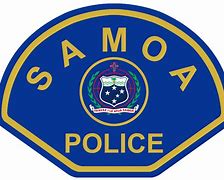by Tusi Tala, Staff Writer
The warship HMS Tamar is docked at Apia International Port as Samoa prepares for the Commonwealth Heads of Government Meeting (CHOGM).
This Royal Navy vessel, based permanently in the South Pacific, has been patrolling the south coast of Upolu following the grounding of HMNZS Manawanui on Tafitoala Reef on October 6, which led to a fire and the ship sinking the next day.
In Apia, a large digital clock on the Fiame Mataafa Faumuina Mulinuu II Building, which houses the government and the Prime Minister’s offices, is counting down to the start of CHOGM in 10 days.
Samoa is finalizing years of preparations for CHOGM 2024, scheduled for October 21-26, where leaders from 56 Commonwealth nations will convene in Apia.
King Charles and Queen Camilla will be attending the meeting as part of a state visit to Samoa, marking the King’s first visit to the country as head of the Commonwealth. Their trip aims to celebrate the strong bilateral relations between the two nations and will support one of CHOGM’s main themes, “a resilient environment,” with a particular emphasis on ocean issues.
CHOGM Samoa 2024 represents a significant logistical challenge for the island nation, renowned for its hospitality. The recent sinking of the Manawanui has further strained Samoa’s resources.
Authorities are currently conducting sweeps along 20 kilometers of the southwest coast from Safata to Lefaga, as divers from New Zealand and Samoa monitor three leaks from the Manawanui to assess how to prevent diesel from contaminating the ocean.
Three villages on Upolu’s southwest coast—Tafitoala, Mulivai, and parts of Si’umu—have been warned against fishing in their local waters while waiting for the results of water testing.
“Just because there’s no oil washing ashore doesn’t mean the water isn’t contaminated,” stated Fui Tupai Mau Simanu, chairperson of the Samoa marine pollution advisory committee managing the response to the sinking.
The New Zealand Defence Force has indicated that the Manawanui carried 950 tonnes of diesel when it sank, but so far, coastline inspections have reported no signs of contamination.



